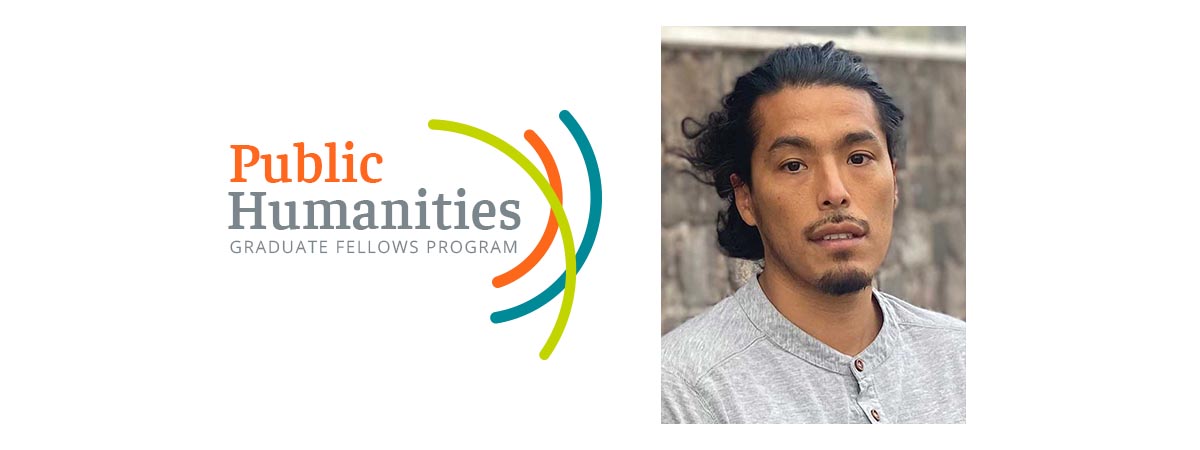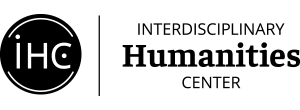
15 Jun Interview with George Ygarza on Working with BLM Paterson
June 15, 2022
George Ygarza is a Ph.D. candidate in Global Studies. His research, which is grounded in sustained collaboration with communities in and beyond the university, explores Indigeneity and the politics of autonomy and resistance to the State across the Americas. As an IHC Public Humanities Graduate Fellow, Ygarza worked this spring with BLM Paterson, a non-affiliated mutual aid group working to transform the city of Paterson, New Jersey, to ensure safety and justice for all Black people.
Who is your community partner, and what project did you complete with them?
My community partner is BLM Paterson, a non-affiliated mutual aid group working in Northern New Jersey. Since 2016, BLM Paterson has been working in the city known as “Silk City” on various mutual aid projects, including food and clothing drives, community fridges, wellness workshops, and more. In 2021, responding to rising concerns about the direction of their city, BLM Paterson began to think about ways to bring the community into policy-making processes. It was at this time that I joined their political education committee to discuss ways we could collaborate. Shortly after, the Peoples Assembly project began to take shape. Peoples Assemblies are a way of bringing communities together to collectively think, debate, and develop new social policies. BLM Paterson believed that my digital humanities practicum could be of great service to this assembly. And so, based on the initial conversations in the assembly, I developed a story map about housing injustice in the city.
What were the project’s goals, and how did you go about achieving them?
The goal of our map was to capture the story of housing injustice and envision a different kind of future in the city of Paterson. Although it sounded easy at first, coming up with a story was quite a difficult endeavor, as it depended on several different parts that all needed to cohere. More specifically, we needed to capture a “Peoples History” of housing injustice, one that decentered the perspectives of the big developers and politicians and instead focused on the residents.
We began this process with a simple method: listening. We reached out to the community, held an assembly, and engaged with Patersonians through sincere dialogues where they became authentic partners in this project. We supplemented this experiential knowledge with feedback from the Labor Museum and the Paterson Library. BLM Paterson’s political education committee met weekly to discuss the structure of our dialogues and the notes of the meeting, reporting back to the assembly and soliciting the input from community members. As opposed to the previous forums held in the city, this assembly counted on report-back protocols, inviting the community to make proposals and define what housing justice meant to them.
How did your training as a graduate student in Global Studies prepare you for this work?
My general training in academia—specifically the approaches and methodologies in developing a structured proposal and argument—allowed me to confidently synthesize the information into a compressed and accessible storyline that worked for our maps. The transdisciplinarity of Global Studies in particular allowed me to utilize a humanistic social science to develop a people’s archive through the dialogues and research we conducted in the city. More specifically, I used my critical approaches to globalization to better understand the decline of the city within the context of outsourcing, neoliberalism, and white/capital flight at the turn of the 21st century.
What are your new skills?
I have learned so much about the digital humanities during my time as a graduate fellow. I was introduced to various digital tools and programs, including ARCGis and QGis, the latter of which I continue to train in with the help of Ryan Horne, the digital humanities resource facilitator at the UCSB library. I have also been trained in EsriStory maps, a fascinating blog-like site that allows you to develop striking and captivating stories with great visuals such as photos, videos, and maps that can be imported from QGIS.
How has your fellow-designed project and your participation in the Public Humanities Graduate Fellows Program influenced your understanding of publicly engaged humanities work?
This experience has transformed the way I see and understand research as it relates to the general public. Whereas I had previously found it difficult to translate academic research to a wider audience, this program provided me with different approaches to research, sharpening my skills for collaborative engagement. It taught me that research in the humanities can be brought down from the abstract without compromising its sophistication and theoretical elements. More specifically, it allowed me to apply my research in useful ways such as community maps. More so, this project provided me with the opportunity to co-produce knowledge alongside my community partners.
What’s next for you or this project?
The IHC fellows program turned out to be the impetus for what is shaping up to be a long-term project. This summer I will be working as an RMP mentor, during which I will collaborate with two high school seniors on a digital mapping project that will build on our original story map. I will be running some digital humanities workshops for the BLM Paterson Political Education committee and hopefully produce more materials that will serve as templates and toolkits for other community-based projects. I also plan to develop a larger hub of digital maps centered around social justice issues for the region I am working in.
View the working storymap.
Click here to learn more about the IHC Public Humanities Graduate Fellows Program.

